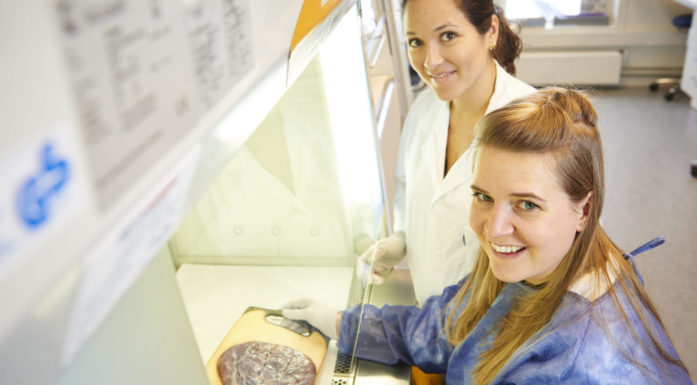Information from 30 000 pregnant women can save lives
Women who have complications during pregnancy are at a much higher risk for cardiovascular disease. Now, information from 30 000 women will make a huge contribution to preventing disease and saving lives.
Between three and twelve per cent of women have complications during pregnancy such as high blood pressure, premature births, or low birth weight babies. About four per cent of women experience pre-eclampsia, an affliction that results in a suite of health problems, including high blood pressure and high protein levels in urine.
These women are twice as likely as women who have had complication-free pregnancies to suffer from a stroke or heart attack later in life.
“Pregnancy is a stress test for the body. It turns out that having complications during pregnancy can be a risk factor for cardiovascular disease,” Bjørn Olav Åsvold says. “For many, complications during pregnancy may actually be an indicator of increased risk, rather than a cause.”
Åsvold is a researcher at NTNU’s Department of Public Health and General Practice, and is one of the scientists selected for NTNU’s Outstanding Academic Fellows Programme.
Valuable answers
Researchers have previously noted the correlation between pregnancy complications and cardiovascular disease. Åsvold’s research project aims to take this knowledge a step farther— whereas previous research only included information from birth and death registries, this project taps into a wealth of new information.
The Outstanding Academic Fellows Programme
- NTNU has selected 17 young university researchers for its new Outstanding Academic Fellows Programme, which is designed to give them the opportunity to grow their careers.
- The researchers, who are already internationally recognized, work on topics ranging from economic history to nanotechnology and medical science.
- With the support of international mentors, research visits, get-togethers, money and the expertise of the Norwegian Olympic Committee in talent development, the fellows will have the opportunity to improve their competitiveness in the international research world.
“The long term goal is to improve the way that we prevent the diseases that affect a woman’s cardiovascular system,” says Åsvold.
Unique data
Åsvold and his colleagues have collected information about the women from many different databases. Their sources include patient journals and the medical birth registry, and the researchers are also using data from a comprehensive, long-term health study called the Nord-Trøndelag Health Study (HUNT). All of the 30 000 women included in the analysis have participated in the HUNT study at least once, and have given birth to at least one child since 1967. Three large-scale health surveys have been conducted for the HUNT study since 1984, for which risk factors such as blood pressure and fat content in the blood were measured.
“An important criteria for our project’s success is that we have access to enough data. The HUNT study is somewhat unique globally because so many people have participated in the study, and because it’s been going on for so long, since 1984. The fact that we can link our information to so many other registers also makes our data special,” Åsvold says.

Outstanding Academic Fellow Bjørn Olav Åsvold at NTNU is trying to figure out when women with an increased risk of cardiovascular disease should be checked by a doctor. Photo: Terje Trobe
“Because we can follow the patient histories of so many women over such a long time, we are able to calculate the risk of disease with great precision,” he says.
Risk groups
The researchers are looking at which common cardiovascular diseases develop after pregnancy, and specifically at when they begin to develop. This may have important implications.
“Because the women have participated in the HUNT study, we can see how diseases develop over time. We want to be able to know when women in risk groups should be checked for indicators of cardiovascular disease.”
The data also includes information about other risk factors such as obesity, smoking, and high blood pressure.
“We would also like to know if taking complications during pregnancy into account as a risk factor will improve our accuracy in finding the patients with the highest risk of disease,” Åsvold says. “These are the patients we would like to take preventative measures with, because patients with the highest risk are the ones who have the most to gain.”
“It’s very motivating to work on a project that we hope will be of great use,” he says.
Local and international connections
This project is supported by the Research Council of Norway. Åsvold is working with two other researchers, Pål Romundstad and Lars Vatten. Håvard Dalen from Levanger Hospital and Janet Rich-Edwards at Harvard University are also connected to the project, as well as several PhD candidates.




